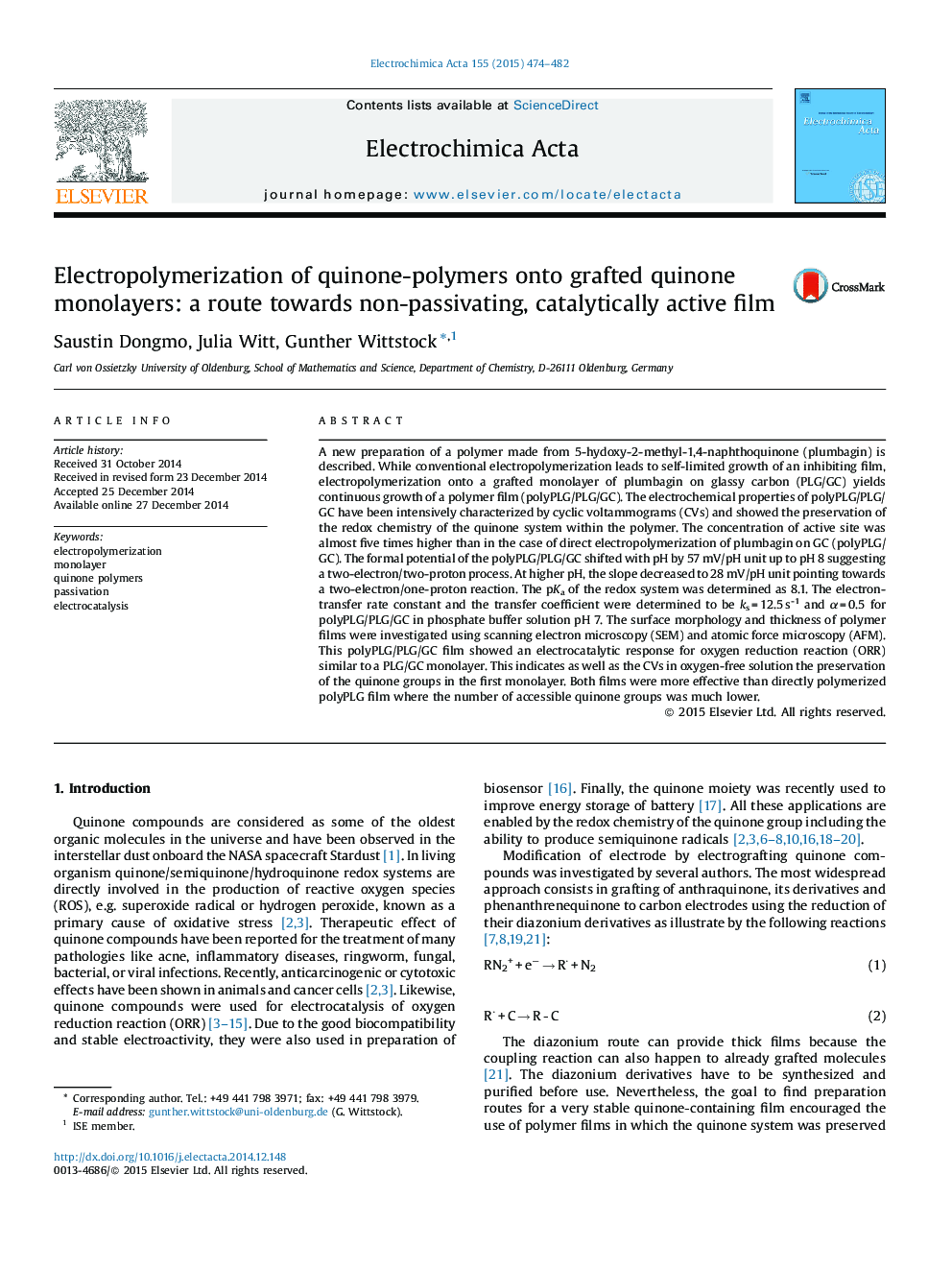| کد مقاله | کد نشریه | سال انتشار | مقاله انگلیسی | نسخه تمام متن |
|---|---|---|---|---|
| 184600 | 459578 | 2015 | 9 صفحه PDF | دانلود رایگان |
• Grafted plumbagin layer allows electropolymerization of plumbagin on glassy carbon
• Films on monolayer grow to >72 nm thickness, without monolayer only to 10 nm
• Films on monolayer show globular morphology
• The concentration active quinone groups was increased 5 fold by a grafted monolayer
A new preparation of a polymer made from 5-hydoxy-2-methyl-1,4-naphthoquinone (plumbagin) is described. While conventional electropolymerization leads to self-limited growth of an inhibiting film, electropolymerization onto a grafted monolayer of plumbagin on glassy carbon (PLG/GC) yields continuous growth of a polymer film (polyPLG/PLG/GC). The electrochemical properties of polyPLG/PLG/GC have been intensively characterized by cyclic voltammograms (CVs) and showed the preservation of the redox chemistry of the quinone system within the polymer. The concentration of active site was almost five times higher than in the case of direct electropolymerization of plumbagin on GC (polyPLG/GC). The formal potential of the polyPLG/PLG/GC shifted with pH by 57 mV/pH unit up to pH 8 suggesting a two-electron/two-proton process. At higher pH, the slope decreased to 28 mV/pH unit pointing towards a two-electron/one-proton reaction. The pKa of the redox system was determined as 8.1. The electron-transfer rate constant and the transfer coefficient were determined to be ks = 12.5 s-1 and α = 0.5 for polyPLG/PLG/GC in phosphate buffer solution pH 7. The surface morphology and thickness of polymer films were investigated using scanning electron microscopy (SEM) and atomic force microscopy (AFM). This polyPLG/PLG/GC film showed an electrocatalytic response for oxygen reduction reaction (ORR) similar to a PLG/GC monolayer. This indicates as well as the CVs in oxygen-free solution the preservation of the quinone groups in the first monolayer. Both films were more effective than directly polymerized polyPLG film where the number of accessible quinone groups was much lower.
Figure optionsDownload as PowerPoint slide
Journal: Electrochimica Acta - Volume 155, 10 February 2015, Pages 474–482
